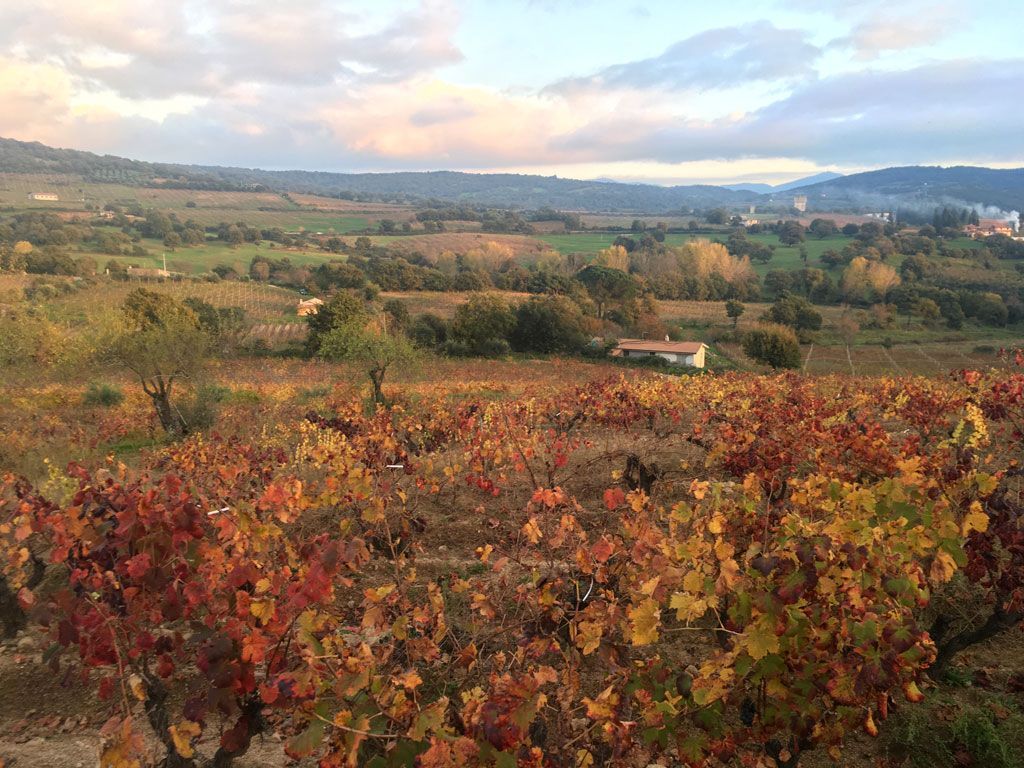
20/377: Atzara
INSPIRATION

The distance between Sorgono and Atzara is only a few kilometers, downhill, I cycle through the Mandrolisai vineyards, this year partly ruined by the persistent rains, and therefore not showing the typical autumn red color.
I arrive at Atzara without any contact. I take a tour to the old centre of the village, today quite desolate, just cats, stuffed boars, and vines climbing houses.
I sit and listen to the sound of the midday bells outside the church of Sant’Antioco, with its beautiful rosette window. I rest a bit catching a warm autumn sun, and conceiving ideas for my musical fragment.

After wandering a little more and having taken some more sun out of another little church, San Giorgio, I set off for the Pinacoteca. I discover that the famous Sardinian painter Antonio Corriga was a native of Atzara, and that they have some works of his in the gallery.
But not only. I discover the history of Spanish painters who at the beginning of the last century had settled in Atzara thanks to the work of an enlightened mayor: Eduardo Chicharro and Antonio Ortiz. There are some of their works, beautiful, depicting mainly characters of the era in traditional costume.

Thanks to the guys from Sorgono, I contact Maurizio, an artisan fabrics dyeer with just natural dyes, who invites me to lunch. In the afternoon he brings me to the countryside to see the Seventeenth century church of Santa Maria de Susu (high part of the village … because there is also a Santa Maria de Josso, in the downtown area).
We climb a path, an old road of communication between villages flanked by ancient walls, which leads to a vantage point from which you can admire the whole Atzara and the surrounding vineyards, and a view of the surrounding mountains and woods, up to the Oristano area.

As they already told me in Tonara and Sorgono, Maurizio tells me the story of the people of the village of Spasulè, which in the Middle Ages was abandoned as a result of water poisoning and whose inhabitants moved to those who later became Tonara, Sorgono and Atzara .
For the first time since I started the project I can not find a place to sleep and return to Sorgono where the good Daniel offers me accommodation for the night. Not before having brought me to visit two nuraghes at sunset, on one of which we climb, Daniele like a monkey, I tremble with vertigo!
SOUND FRAGMENTS
Inspired by the sound of the midday bells of the church of Sant’Antioco.

SARDINIAN SHORT STORIES

After having graduated in natural sciences and having lived in Cagliari, Maurizio decides to re-establish himself in Atzara, to follow his passion for nature and put his knowledge into practice.
La Robbia is his workshop and his laboratory of natural dyeing of fabrics. Maurizio welcomes me and tells me about his business. He creates dyes only from natural substances, especially vegetables, madder, saffron, and other local herbs, but also an animal one, a mold of plants.
He shows me the containers where the wools are soaked to get the color. And I see (and touch) the finished product: Sardinian wool, a bit rough to the touch, and merino wool, softer, with which scarves, hats and other accessories are produced.
While he speaks to me, Maurizio takes the opportunity to dip some skeins in the hot liquid, adds a few teaspoons of turmeric to give the yellow of the local grass a warmer tone, and turns everything with a stick.
At the end of the visit he tells me ‘take this, the cold season will start soon’ and gives me a wool scarf, with beautiful blue tones. Thanks Maurizio, my winter rides will be more pleasant!